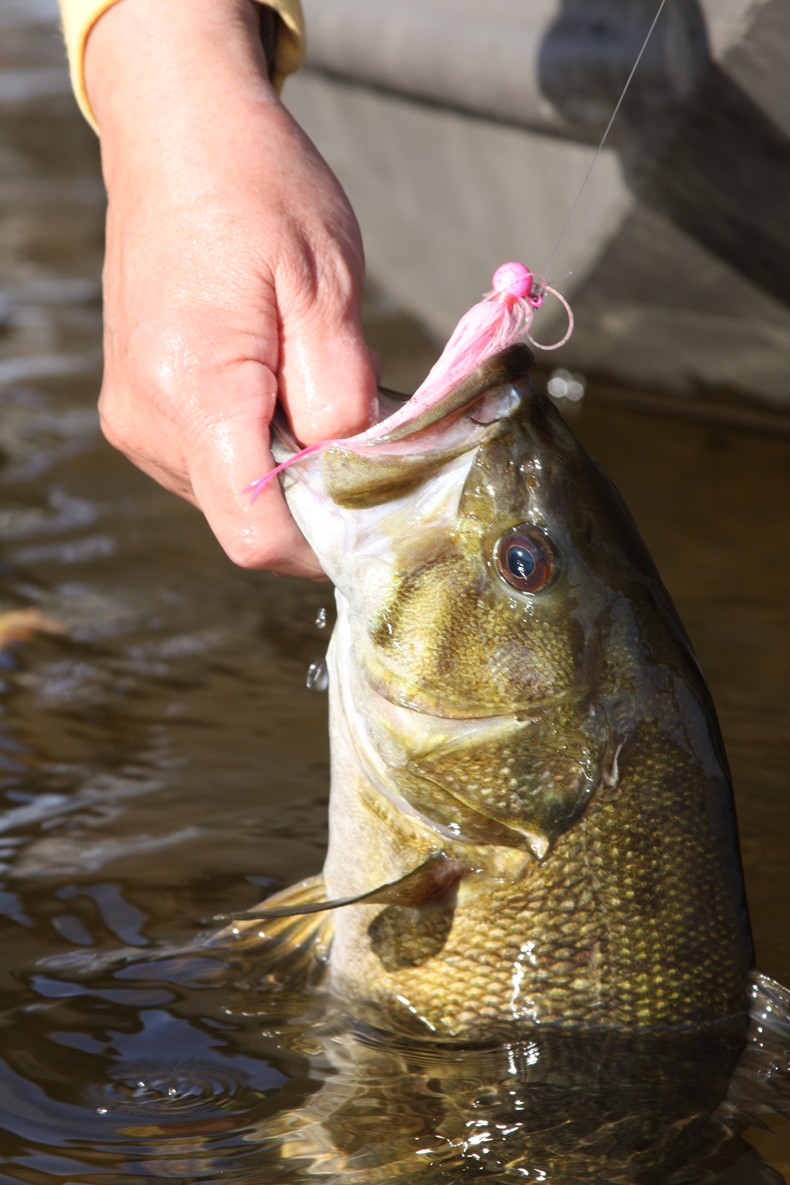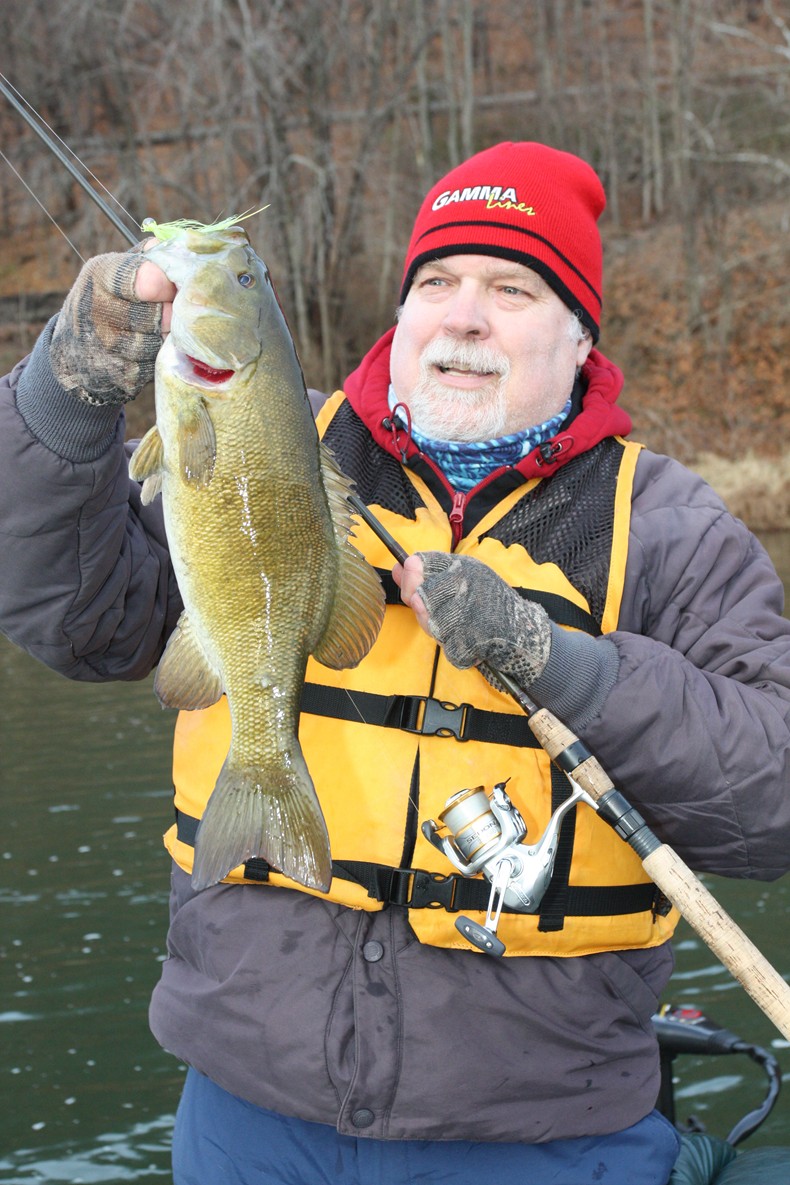 By Darl Black
By Darl Black
It’s winter. Smallies in shallow-to-moderate-depth rivers have moved to the slower, relatively deeper water of eddies, reduced current pool, and outside-bend holes. Water temperatures will likely vary between 32 degrees and 42 degrees. With water this cold, the best lure to have tied on may be a hair jig. However to enjoy success, you must know hair jig protocols.
1. DO select a jig tied with natural hair, crafted tied here in the USA. Less expensive synthetic hair simply does not have the allure of real hair. Natural hair has smooth flow when wet and enticing undulation in the current. Deer hair may be the most popular for jigs, but good tiers may use several types of natural hair and fur, often in combination with natural feathers. Okay, a bit of artificial tinsel, Crystal Hair or strands of silicone may be included as an accent on a hair jig, but the main ingredient for the body of the jig is natural hair. (The exception to natural hair in cold water would be craft hair jigs for float-n-fly fishing – but that’s a story for another time.)
2. DO choose jig weight based on depth and current flow, using the lightest weight jighead you can get away with for the conditions. You do not want a hair jig to bog down. Be sure to carry jigs in the five most practical weights: 1/16, 3/32, 1/8, 5/32, 3/16, and ¼ ounce. It is critical to have heads in each size handy in order to achieve the most effective retrieve.
3. DO NOT fish a hair jig as bottom bumping or bottom dragging bait. Hair should be fished with a slow swimming retrieve. Of course it is necessary to allow the jig to collide with the bottom on the initial drop, but the retrieve should be a slow-roll, attempting to contour the bottom. Lightly brushing the bottom occasionally lets you know you the jig is in the zone.
4. DO fish a hair jig slowly. Hair should literally hover in the current just off the bottom, which is why it is so important to have jigs in all the above weights. Because you must fish a hair jig slowly, it is not a random search lure. Fishing hair is a super finesse presentation for cold water when the location of bass has been identified or at least strongly suspected.
 5. DO NOT use stout line and overly heavy-action rods when fishing hair jigs because you will not be able to detect the light bites. My favorite rod is a G.Loomis GLX Bronzeback 6’10” 2 power – unfortunately no longer in production – spooled with 4-pound or 6-pound Gamma Edge Fluorocarbon. Regardless what you may have heard about fluorocarbon line, Gamma Edge in light pound test fishes very well in cold water. I’ll be testing new hair jig rods this coming year, looking for high end graphite about 7′ in a 1 or 2 power with the ability to handle 1/16 to 3/16 ounce jigs – but with a light tip so you can do a pull hookset rather than a forceful snap.
5. DO NOT use stout line and overly heavy-action rods when fishing hair jigs because you will not be able to detect the light bites. My favorite rod is a G.Loomis GLX Bronzeback 6’10” 2 power – unfortunately no longer in production – spooled with 4-pound or 6-pound Gamma Edge Fluorocarbon. Regardless what you may have heard about fluorocarbon line, Gamma Edge in light pound test fishes very well in cold water. I’ll be testing new hair jig rods this coming year, looking for high end graphite about 7′ in a 1 or 2 power with the ability to handle 1/16 to 3/16 ounce jigs – but with a light tip so you can do a pull hookset rather than a forceful snap.
6. DO NOT put a liquid or spray scent on a hair jig. The scent will make the hair slick and sticky so it does not flow and quiver correctly. If you believe scent is necessary, use a small piece of Stubby Steve Nugget (similar to Power Bait) on the hook.


